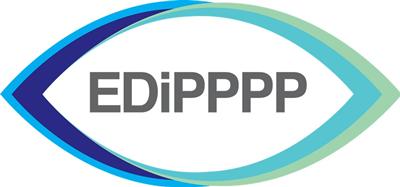Background: According to the Royal National Institute of Blind people (RNIB) over two million people in the UK are living with sight loss and this number is predicted to double to nearly four million by 2050. Some of the conditions that lead to sight loss and impaired vision can be treated if eye tissue is available. The problem is that of all organs and tissues that can be donated, eyes are the least donated meaning that there is not enough tissue to undertake the 5000 corneal transplants that are reported to be needed on an annual basis.
In the year 2015-2016 only 2,897 eyes were donated. To bridge the gap in supply, National Health Service Blood and Transplant (NHS-BT) Tissue Services (TS) are seeking new routes of supply from Supportive and Palliative Care Services (SPCS) and Hospice Care Services (HCS). However, before allocating substantial resources to new referral routes, TS need evidence regarding the current potential and barriers to eye donation (ED), as this will inform service provision.
This 36 month study aims to answer the following research questions and achieve the four study objectives by delivering three work packages:
Research Question 1: What is the potential for ED in SPCS and HCS and what consequences will any increase in ED from these settings have for TS in relation to resources/infrastructure/logistics.
Research Question 2: What system based/attitudinal and educational barriers/facilitators to ED influence the identification and referral of potential eye donors in clinical settings and the embedding of ED in end of life care planning (EOLC)?
Research Question 3: What behaviour change strategies will be effective in increasing ED across the community of service providers and service users within SPCS and HCS?
Study objectives:
Objective I) to scope the size and clinical characteristics of the potential ED population from research sites.
Objective II) to map the donation climate of each research site via a systematic assessment tool The Rapid Assessment of hospital Procurement barriers in Donation (RAPiD).
Objective III) identify factors (attitudinal, behavioural) that enable or challenge service providers to consider and propose the option of ED as part of EOLC planning from a local and national perspective.
Objective IV) Identify service users' views regarding the option of ED and the propriety of discussing ED as part of admission procedures or as part of EOLC planning conversations.
Methods: three integrated work packages will triangulate data gained from six research sites across England via: qualitative (nonparticipant observation, interviews, focus groups, naturally occurring narratives) and quantitative methodologies (retrospective note review, questionnaires), informed by theoretical perspectives (Burden of treatment, Conflict Rationalisation, Gendered differences) and structured via intervention mapping methodologies (6SQuID) and consensus methods to develop, pilot, and evaluate an empirically based theoretically informed intervention designed to change behaviours in relation to the identification, approach/request and referral of patients from SPCS and HCS for ED.
Read more about the work on our press release.
